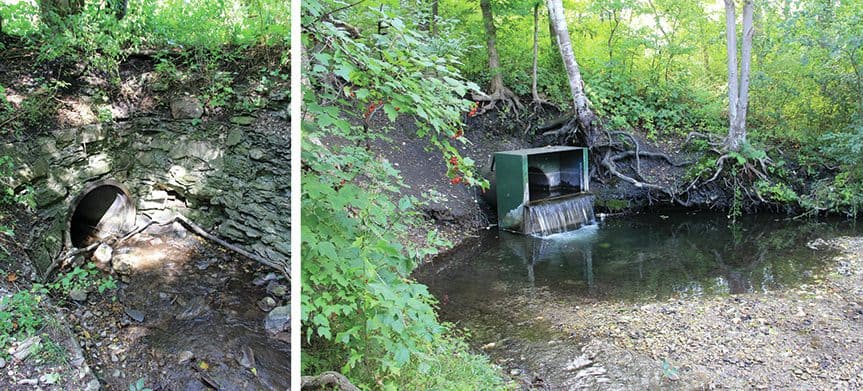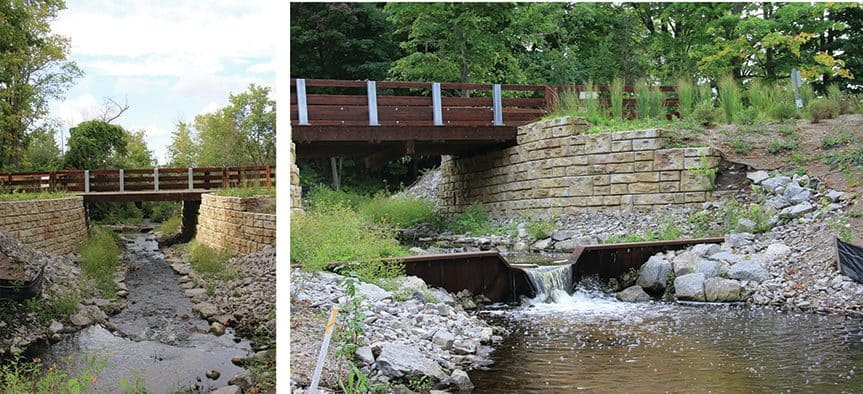The lower section of Tannery Creek was one of the most impaired systems in Northern Michigan.
Water quality assessments by the Michigan Department of Natural Resources and Environment (MDEQ), Little Traverse Bay Bands of Odawa Indians (LTBB), and Tip of the Mitt Watershed Council had documented:
- High nutrient and chloride concentrations relative to other streams
- High water temperatures that threaten cold-water fisheries
- Poor aquatic macroinvertebrate community in the lower section
The adjoining commercial area and expanding residential areas upstream contribute nonpoint source and thermal pollution. Hardened structures and hydrologic changes (flashiness caused by stormwater runoff from nearby parking lots, roads, and roofs) have resulted in scouring and accelerated erosion of the stream channel.
Problems & Challenges
Stream bank vegetation had been removed and replaced with turf in the upstream portion of the project area and invasive plant species had taken over the riparian area in the lower section. A hard surface non-motorized trail crossed the Creek near the Little Traverse Bay shore.
The project, a component of the Little Traverse Bay Stormwater Management Initiative funded by the Great Lakes Restoration Initiative with additional support from the Michigan Department of Natural Resources, U.S. Fish and Wildlife Service, and the Petoskey-Harbor Springs Area Community Foundation, included removal of the existing, undersized culvert and replacement with a timber bridge. A permanent sea lamprey barrier constructed of sheet metal with a central notch for low stream flow was incorporated to prevent lamprey from migrating upstream, while allowing salmon and other spawners to pass.
Restoration Results
- Further accelerated erosion around lower Tannery Creek was halted
- Stream banks stabilized adjacent to commercial area and non-motorized trail crossing
- Runoff from road and parking lot surfaces were reduced by incorporating better stormwater engineering
- Stream channel hydraulics were restored
Throughout our dozens of visits to the site to check on construction progress, we have observed countless walkers, runners, and bikers slow down, pause, and even stop for a few minutes or more at the bridge. Many have even remarked that they never knew there was a stream there, while others are thrilled to see the creek they played in as kids given much-needed attention.
In the future, we hope to partner with other community stakeholders to address issues upstream of the bridge, including invasive species and more undersized culverts. In the meantime, we hope you’ll have a chance to enjoy the Little Traverse Wheelway, and while you’re there, give pause for Tannery Creek.
Before Restoration

After Restoration


